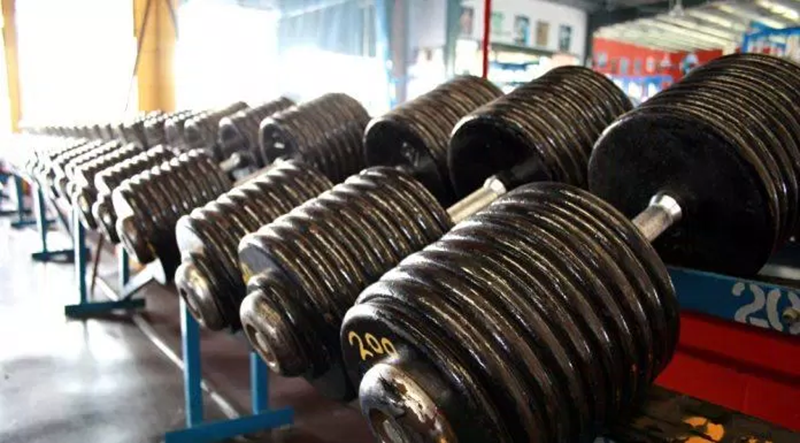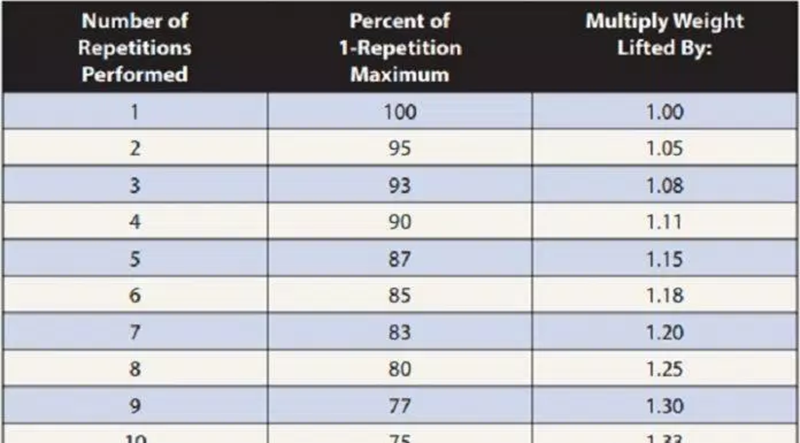If you are a lover of exercise, especially weight training or bodybuilding, knowing the heaviest weight at a time when you start training will greatly contribute to your achievement the best development of a muscle group.
Many bodybuilders and longtime trainers know that the final sets of your workout are the things that help your muscles grow.
Then try to lift weights at maximum weight and within your allowable limit is the best thing to help muscle growth.
For those who practice sports, especially gym or fitness, calculating the optimal daily “curriculum” is an important factor contributing to achievement.
In which the concept of 1RM is used a lot and can be considered as the foundation to build an ideal training regimen. So what is 1RM, what does it mean to gain muscle, and how to calculate this index for yourself? Let's find out with Bellyfatzone in this article!
What is 1RM that so many people are interested in?

1RM stands for “one-repetition maximum”, or abbreviated as “one-rep max”, ie the maximum weight that you can lift exactly 1 time.
For example, if you usually do squats with a weight of 50 kg and can do 10 reps, but one fine day you decide to increase the difficulty of the game and lift it to 80 kg.
After putting all your strength into pushing up 1 time, you lower down to try again but only halfway up have to come back down, then the 80kg weight is your 1RM for the squat exercise.

This is an indicator that is applied a lot in sports training in general and especially in bodybuilding, gym, and fitness. Coaches and practitioners often rely on 1RM to calculate exercises and lesson plans suitable for each person's physical condition, thereby helping muscles develop optimally.
Sports enthusiasts know that the two pillars that determine the success or failure of this “mortification” process are nutrition and exercise. In which the training program is never short of 1RM, usually applied in percentage terms (ie training plans require you to lift weights equal to X percent of 1RM with Y reps).
So why do people care so much about it? This is because 1RM has the following meanings:
1. Helps you to know the range of your power

In sports training, the most taboo thing to avoid is choosing a weight or resistance force that is too large, beyond the body's tolerance. Not only is this prone to injury, but it is also ineffective with muscle growth.
Imagine you're doing a squat with so much weight that you can only lift it once or twice, is that enough stimulation for your muscles to make them grow bigger? And if you try to do it many times, such a heavyweight will make your body weaker, not stronger.
On the contrary, making a lesson plan based on a % of 1RM also helps to avoid the situation of choosing a weight that is too light, not “enough” compared to your ability.
While this is not dangerous, it is a waste of training time because the muscles are not stimulated properly for optimal development.
2. Helps you calculate the number of reps needed for each exercise

According to sports experts, training with heavy weights but few reps has the same effect, or even better than doing many reps with light weights. But how to know what is heavy and how much is light?
That's when you need to use 1RM. Based on the maximum weight a muscle can lift at one time, you will calculate the number of reps that can be performed with lighter weights.
3. 1RM is a measure of progress in training

Of course, those who have practiced, who do not want to have stronger muscles, have the motivation to continue dragging themselves to the gym every day and have the health to work and enjoy life.
But how do you know if your muscle strength has increased compared to before? There are different ways to measure it, but 1RM is probably the most accurate.
The ideal interval for you to retest 1RM is about 3 to 6 months, just enough to see muscle progress. If your 1-rep max performance this month is better than it was a few months ago, you can be glad you didn't waste time and sweat in the gym.
Notes to correctly determine 1RM

If the definition is accurate and complete, then 1RM is not only the heaviest weight that you can lift exactly once, but also has to add the condition that you perform the right technique, form standard, and maximum range of motion (full range of motion), or full ROM).
So if you arch your back when squatting or deadlifting, it doesn't count as 1RM (in addition, it also damages joints), or doing pull-ups with weights without going above your chin is also wrong.
There are also some other notes about the 1RM concept that you need to understand before trying to determine this metric:
The same muscle group works but at different exercises will have a different 1RM. In other words, 1RM is a parameter specific to the exercise, not the muscle group. For example, you can pull up 1 rep with a 30kg weight, plus a 60kg body weight for a total of 90kg, but when doing pull down with the machine you can only pull about 60kg.
One possible explanation for this is the fact that no two exercises are 100% alike, in addition to the same major muscles, there are also different secondary muscles involved in the movement, so the results will vary differently.
That's not to mention the phenomenon of “practice you know that lesson”, the new exercise, although easy, still feels weaker than the familiar exercises.

To determine the correct 1RM, you need to put your body in the most energetic state, that is, at the beginning of the training session when you have fully warmed up but have not done any other exercises to avoid losing strength leading to 1RM not being right for your strength. real body. This issue will be explained in more detail in the following section.
And of course, a “truth” that everyone understands is that everyone's 1RM index will not be the same, so don't try to “race” according to the heavyweights of athletes or longtime practitioners to do it yourself damage your muscles!

Those are some basic understanding of the concept of 1RM that is applied a lot in sports. But how to calculate this index by yourself? There are 2 ways, the first is the most obvious…
Do the exercise yourself to determine 1RM
Surely this is the most accurate way to know the limits of muscles, there is no better way than “experience” it yourself. However, there are advantages and disadvantages, this method requires you to be extremely careful and understand the implementation process to bring the right results.

To prepare for the 1RM test, you must spend the previous days training at a lighter intensity so that the muscles can recover to their peak state. If you constantly have to squeeze all the way through every workout, your muscles won't be able to produce an accurate 1RM result.
The second point to note is that this test will push your body to the limit of maximum tolerance, so it is very prone to injury. So before starting, warm-up carefully and estimate the weight within the allowable limits, and at the same time perform the absolute correct technique and do not try too hard lest you become “too late”!
Finally, there is the problem of recovery after the test, because the intensity of 1RM is higher than normal exercises, so it will take longer for the body to repair the damage. Some experienced trainers even say it takes 1 to 2 weeks to fully recover.
So if you feel exhausted after the test, rest comfortably until you feel “full of battery” again.
Because of such worrisome problems, the 1RM self-test method is rarely used. In fact, athletes often calculate this index using relatively precise formulas, using lighter weights to avoid possible injuries.
Popular formulas for calculating 1RM today

In order to calculate the maximum weight for a single rep, you need to know the maximum reps for lighter weights, denoted by “X rep max”. For example, you can do bicep curls with 10kg weights 5 times, then 5 rep max = 10kg.
You should choose a weight so that the muscle can only perform no more than 10 reps, preferably 3 to 6 reps, because according to a study by the University of New Mexico (USA), such a number of reps will produce a result of 1RM with a high speed higher accuracy.
Before doing X rep max to calculate 1RM, you still have to follow the same principles as outlined in the previous section, which is to reduce the intensity for about 1 week and warm up fully.
During the preparation as well as before the training session, you should get enough nutrition so that your muscles are best nourished, for those who do not have much time to cook, you can buy muscle-gain supplements.

Before entering the test, warm up with the same movements as the exercise but with a lighter intensity. A simple way to do this is to exercise without weights or use a rubber band for support. Interestingly, this type of rope can also increase the difficulty of the exercise is used in other ways.
After fully warming up, all that remains is to step into performing X rep max with standard technique and posture. Remember to choose a weight to limit the maximum number of reps to 3 to 6, then record the results and apply the calculation formulas.
Sports experts have come up with many formulas to determine 1RM, of which the most popular is the Brzycki Matt and Buechele formula:
- Brzycki Matt Formula: 1RM = Weight / (1.0278 – 0.0278 x reps)
- Buechele Formula: 1RM = Weight x (1+ 0.033 x number of reps)
So assuming you can squat up to 5 times with a weight of 50kg, then according to the first formula your 1RM will be 50 / (1.0278 – 0.0278 x 5) = 56.3kg, and according to the second formula two is 50 x (1 + 0.033 x 5) = 58.3, the result is also roughly the same.

There are also some other formulas to calculate 1RM that can also be applied such as:
- Lander: (weight x 100) / (101.3 – 2.67123 x number of reps)
- Lombardi: weight x number of reps^0.1
- O'Conner: weight x (1+ 0.025 x number of reps)
It's important to remember that once you've chosen formula to calculate your 1RM, stick to it next time, so you can accurately track your progress.
So the remaining problem is how to use the calculated 1RM index in daily practice? According to experts, the number of reps and the weight in % of 1RM are related, specifically, you should adjust the number of reps of each exercise according to the table below:

The middle column is the weight in % of 1RM, the left column is the optimal number of reps for that weight, and the right column is just the multiplier with that weight to get 1RM, don't care too much. Based on this table, experts also give the following advice:
- Weights of 85% or more and 6 reps or less are best suited for muscle-building purposes.
- A weight in the middle of about 6 to 10 reps is just enough to maintain strength and fitness.
- Lightweights of 10 or more reps are used to warm up, increase endurance, or tighten core muscles.

End:
So you already know about the “golden index” in exercise and sports – 1RM. Please calculate and apply to your exercise regimen to achieve the best results and conquer the set goals.
This not only helps you practice safely but also increases training efficiency, saving much more time for muscle development goals.
Good luck and win!






